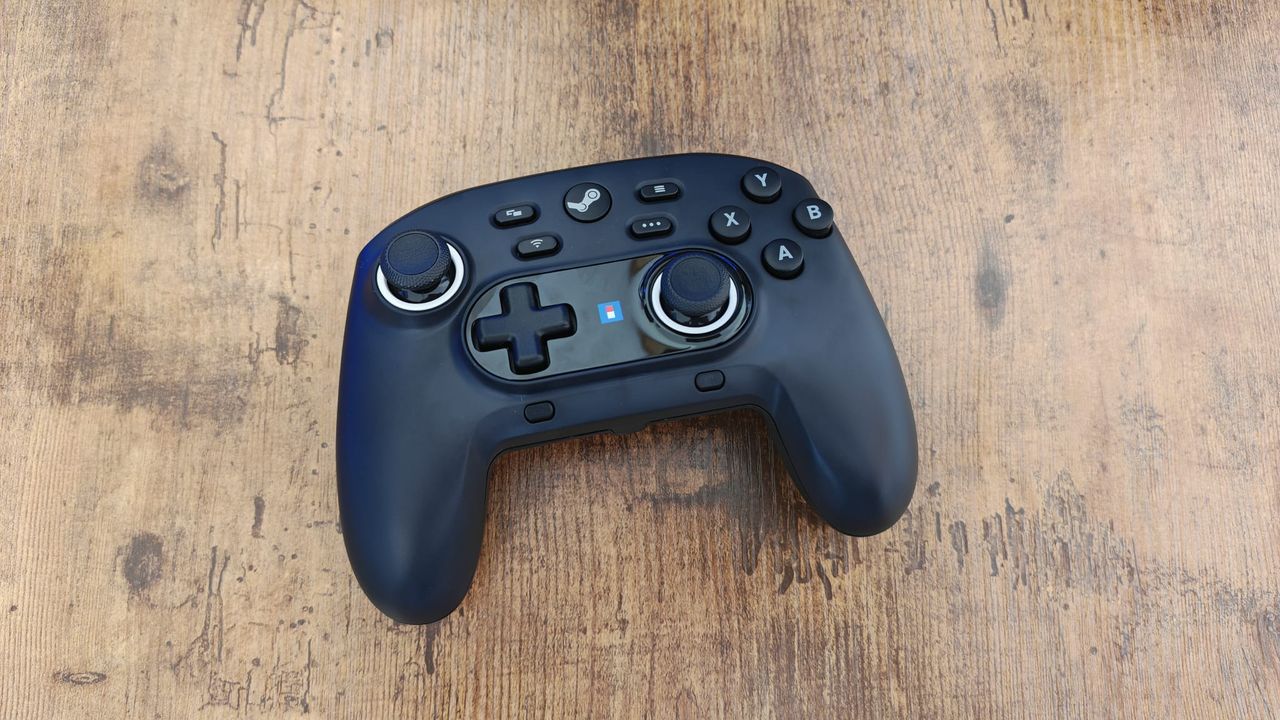
I've seen some weird controllers in my time, but few are as bizarre as the official Steam controller that Valve released back in 2015. A decade later, that controller has faded into obscurity, and regardless of how quirky it was, I'm a little disappointed that no other brand has picked up some of the clever features it tried to showcase. The officially licensed Wireless HORIPAD for Steam isn't quite as adventurous in its design, but you can tell that it's been built by both brands as a spiritual successor to what is probably the strangest gamepad ever made - if you don't count PlayStation's Banana one, that is.
But unlike the original Steam controller back in the day, the Wireless HORIPAD for Steam is now facing a barrage of competition from gamepads that are priced competitively, boast pro features, and have plenty of tricks up their sleeves. For that reason, it feels like the folks at Hori have tried their best to bring something new to the table. Of all the best PC controllers I've tested this year, this one stands out from the crowd perhaps the most.
And unlike a lot of the officially licensed controllers for console platforms, the price isn't going to leave a sour taste in your mouth. $59.99 / £54.99 is a great price to pay for a gamepad these days, and it's just cheap enough that I'd even call it a budget option. But arguably, that's the most competitive end of the market, and there are some big flaws here that don't work in Hori's favor.
Design
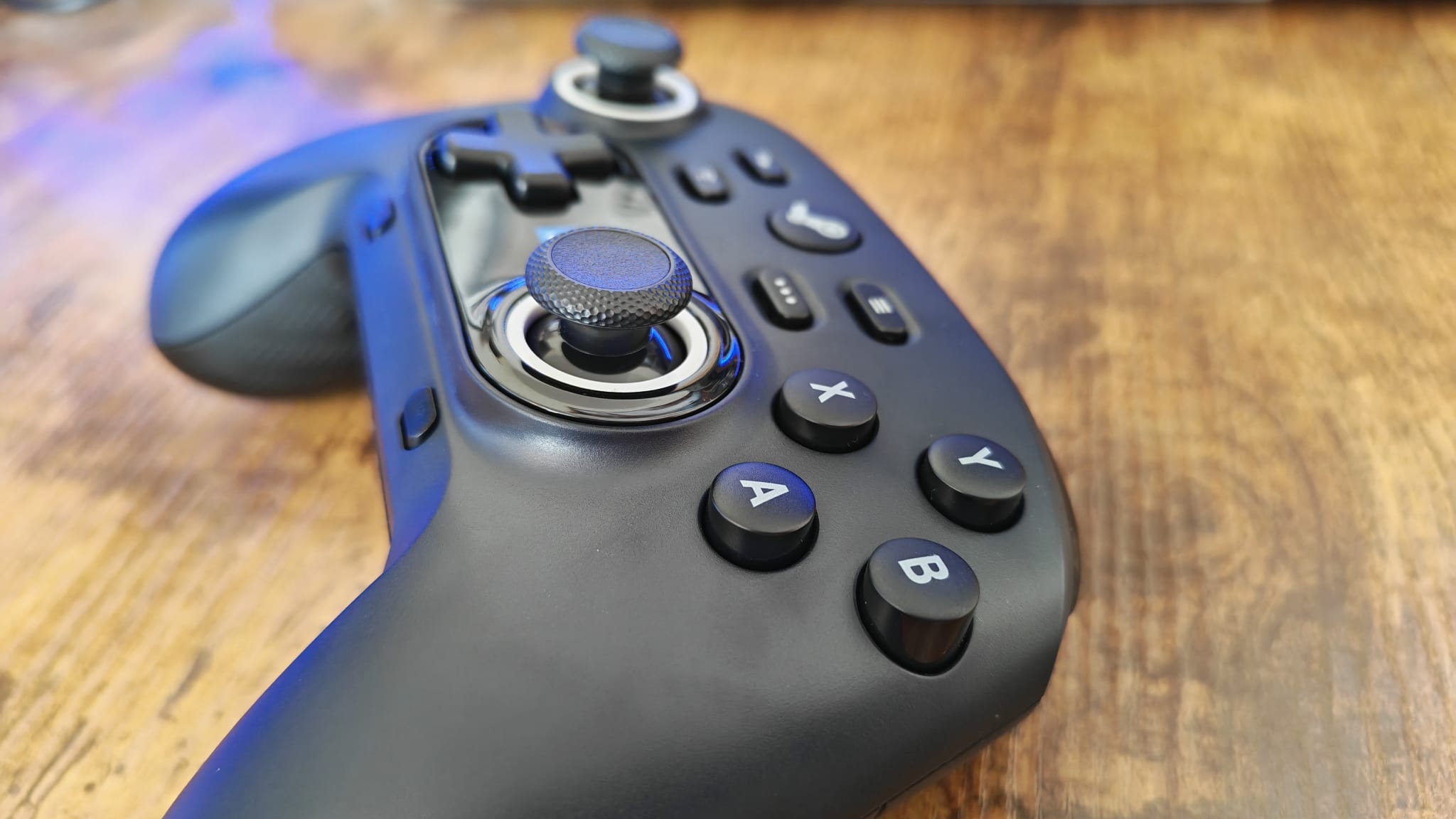
The Wireless HORIPAD for Steam isn't exactly the amorphous blob that the original Steam controller was - there are no trackpads here, for instance, and a glossy surface has given way to a classier matte blue color that matches the Steam logo's color scheme. It's also available in a slew of other colorways, but for me, the Midnight Black is the most authentic. There are two offset thumbsticks that have some hidden tricks up their sleeves, and a shiny central strip across the bottom of the pad's face does harken back to the 2015 model.
On the tops of these thumbsticks are capacitive sensors like the ones found in the PSVR 2 Sense controllers. These allow for extra gyro functionality that, to my knowledge, is only found elsewhere in the Steam Deck and Steam Deck OLED. It allows you to toggle gyro aiming with just a thumb's contact with the tops of the sticks, and it is an ingenious feature.
Something I love about the HORIPAD for Steam is that it isn't afraid to put a more pronounced angle between the grips and the controller's body. Most controllers today make this groove on the back of the controller more subtle, but Hori realises that a harder angle can actually help with ergonomics, especially when two back buttons are in play, like they are here. The back buttons are placed directly on the grip-side of that corner, which means that when your hands wrap around it, your middle fingers naturally land right on them. The level of comfort this provides is sublime, and it feels like it's been thought out to a greater extent than a lot of the gamepads I've reviewed in 2025.
This isn't the only reason this controller feels so distinct. Despite most controllers in 2025 opting for microswitch buttons that are quicker, clickier, and take less pressure to actuate, Hori has opted for much more basic membrane buttons. They're not exactly cushioned for enhanced feel though, and their cheap plastic materials don't feel great in high-pressure moments.
There's a rigidity to this controller's elements that I just haven't been able to enjoy. Its stick tensions are high, its 4-way D-pad is heavy, and the fact that none of the surfaces have been given a more premium texture means my thumbs constantly slip off of them all. The controller also feels extremely lightweight at just 185g. There are no rumble motors or haptics in the grips of the HORIPAD, and although that can give it a sportier feeling that some gamers enjoy, for me, it just exaggerates a feeling that this product has been made with fairly cheap materials. It reminds me of an old PS2 controller because when you pick it up and give it a shake, there are loads of small plastic rattling noises. I'd excuse that at this price, but other budget gamepads have much better build quality than that.
Features
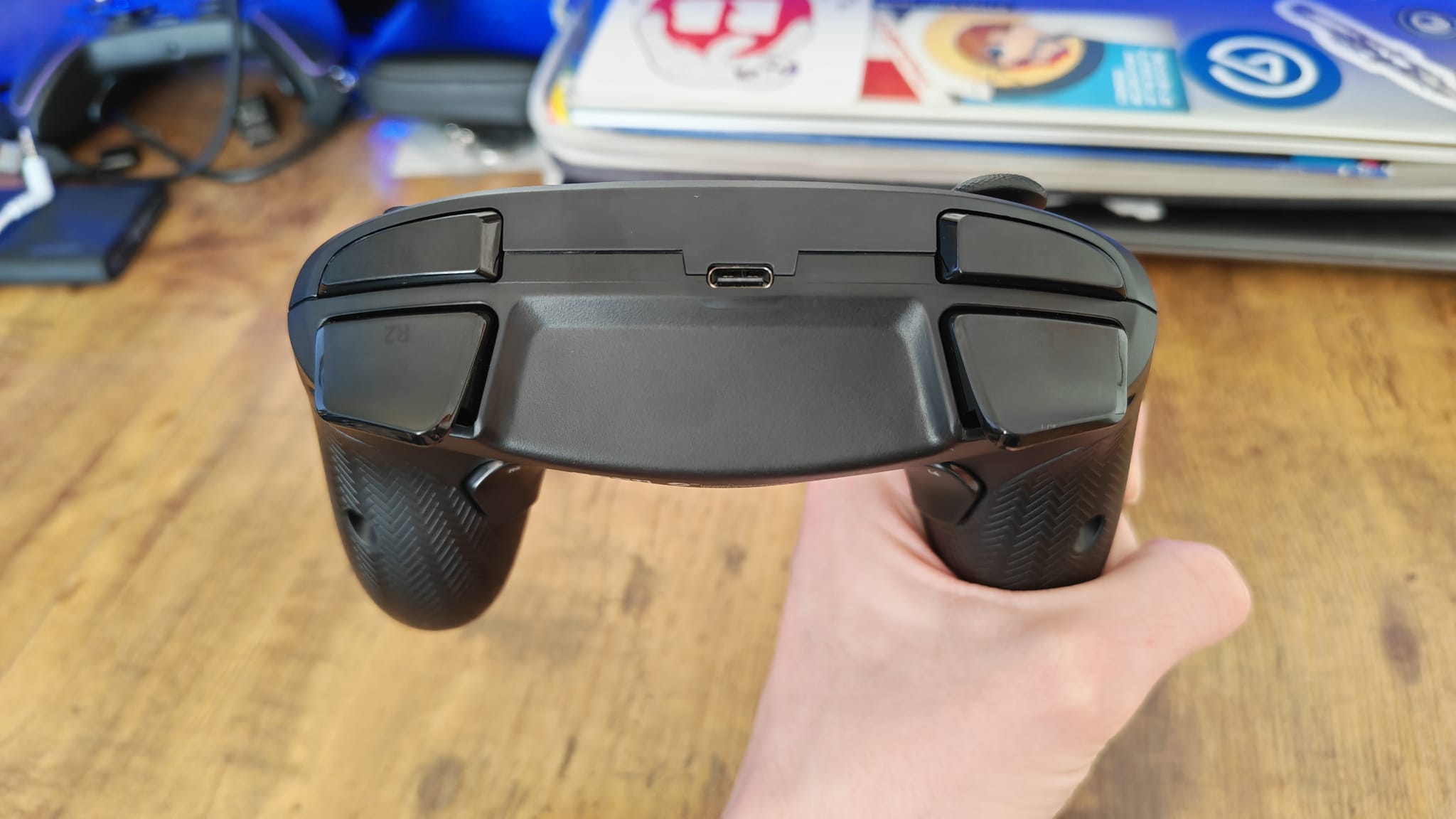
For its quirky design points that may or may not be considered flaws, the HORIPAD for Steam does pack in some really cool features. To be honest, I really dislike that the top of the thumbsticks don't have a rubber coating. Like the PB Tails Crush Defender, your thumbs can't keep a grip on them, but at least here, there's a reason beyond things looking cool. On the tops of these thumbsticks are capacitive sensors like the ones found in the PSVR 2 Sense controllers. These allow for extra gyro functionality that, to my knowledge, is only found elsewhere in the Steam Deck and Steam Deck OLED. It allows you to toggle gyro aiming with just a thumb's contact with the tops of the sticks, and it is an ingenious feature.
Is the trade-off worth it? Your thumbs slipping off the sticks when you actually want to use them is a real pain in the majority of games, so unless you're constantly using the feature, I'm not so sure how it is in a practical sense.
Thanks to being officially licensed by Steam, this controller has Steam input, which is a massive win if you want to play games with a controller that doesn't typically support them. This enables you to map the buttons of the controller directly to keys on your board or functions in the game.
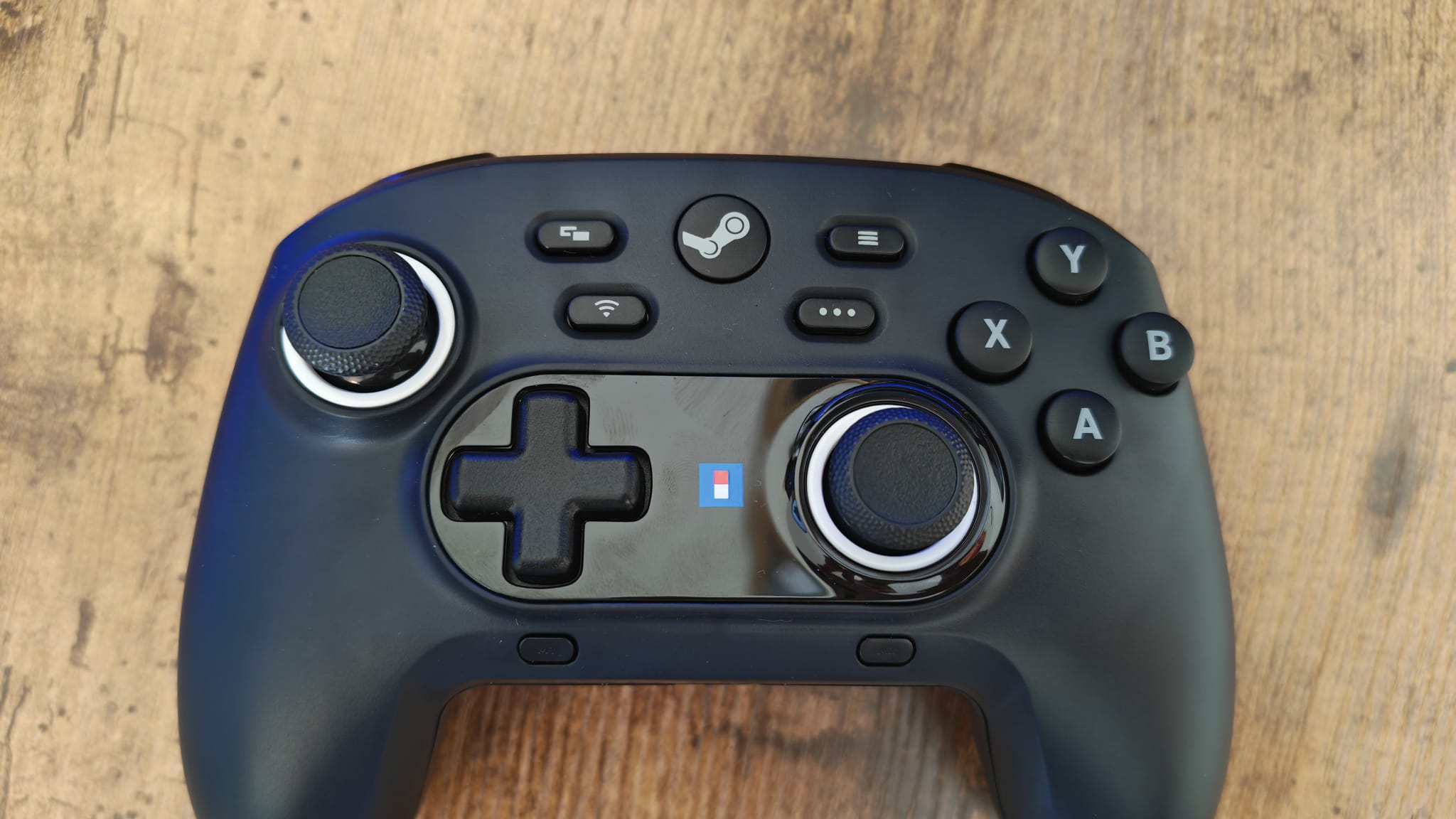
It feels like salt in the wound when this gyro functionality doesn't work as promised, and the thumbsticks are compromised due to their slippery plastic tops.
Being a "wireless" HORIPAD, you can choose to play with it either tethered (there's a cable in the box), or without. Unfortunately, the only wireless connectivity comes through Bluetooth. As someone who reviews gamepads all the time, I know that Bluetooth connection doesn't have the latency issues it used to. In some cases nowadays, it can actually be faster than a 2.4GHz wireless signal. But personally, I always prefer a wireless signal because it's a much stronger connection that doesn't have the volatility of Bluetooth. At the very least, I don't see why Hori couldn't have included a Wireless dongle as well. Thankfully, a USB Bluetooth dongle is provided in the box if your gaming PC's motherboard doesn't have it, but for reasons I'll come to in the performance section, I'd really have liked a Wireless USB dongle.
It might interest you to know that in terms of connectivity, a USB-C port sits on the top of the HORIPAD, but there's no 2.5mm headphone jack, which may cause issues depending on your setup. Thankfully, there's compatibility with PC, Nintendo Switch, and Android devices here. A Steam and Xinput toggle on the back of the controller lets you play around with input settings on PC, but the Xinput mode will only be usable in wired mode.
Xinput is what you'll need to use when customizing the extra button settings, turbo functions, and stick sensitivities. All of these things can be played with in Hori's Device Manager app. While it's useful for there to be a companion app, it's a bit of a shame that you can't map the HORIPAD's extra buttons without it. Thankfully for me, the two back buttons were set to A and X, which is how I usually configure them. I really wish I didn't have to download the app just for the purpose of programming the M1 and M2 buttons on the controller's bottom though.
Performance
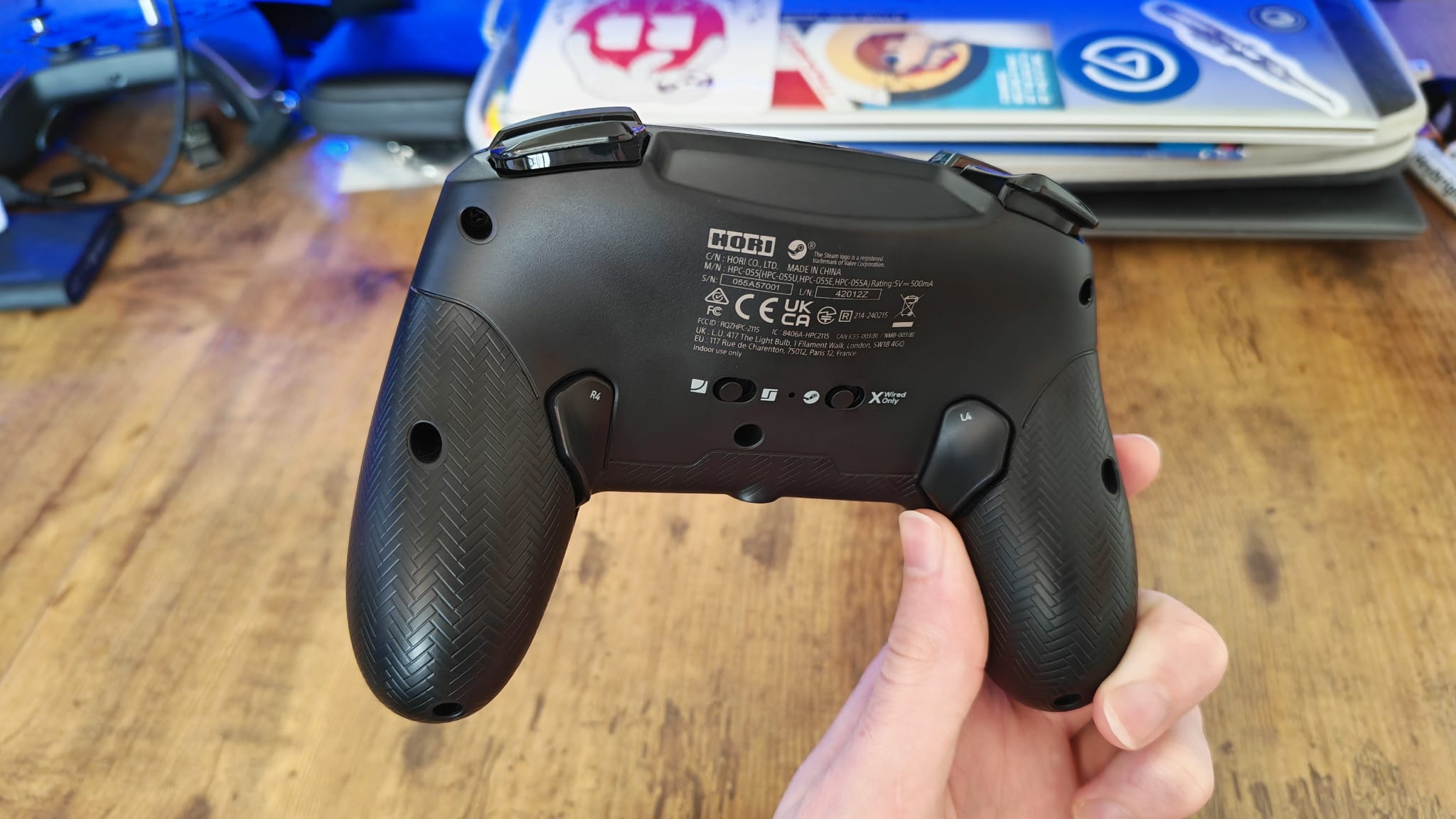
I'm going to jump straight into what I think most people would agree is the main draw of this controller: Those capacitive sensors in the thumbsticks that let you toggle gyro aim. I really believe in this feature, but while it's amazing on paper, it doesn't work in practice. Granted, I don't use gyro aim unless I'm testing it out, but on the Wireless HORIPAD for Steam, it simply does not work. The camera jitters around even when you hold your hands perfectly still, and the movements are so unsteady and nigh-on impossible to control. Looking at the gyro sensor readings within Steam, it makes me think that there's definitely something wrong with the parts Hori has used, because they're reading movements that just aren't happening. Either that, or they're far too sensitive for the average human. This isn't just a me-issue either, as there are plenty of reports online of people who have run into this issue when trying to use motion controls with this product.
It feels like salt in the wound when this gyro functionality doesn't work as promised, and the thumbsticks are compromised due to their slippery plastic tops. These aren't swappable, and the stick tension (the pressure you need to apply to move them in any direction) is fairly high, meaning that slips are really common for me. As you can imagine, that makes using them with precision in FPS games very difficult.
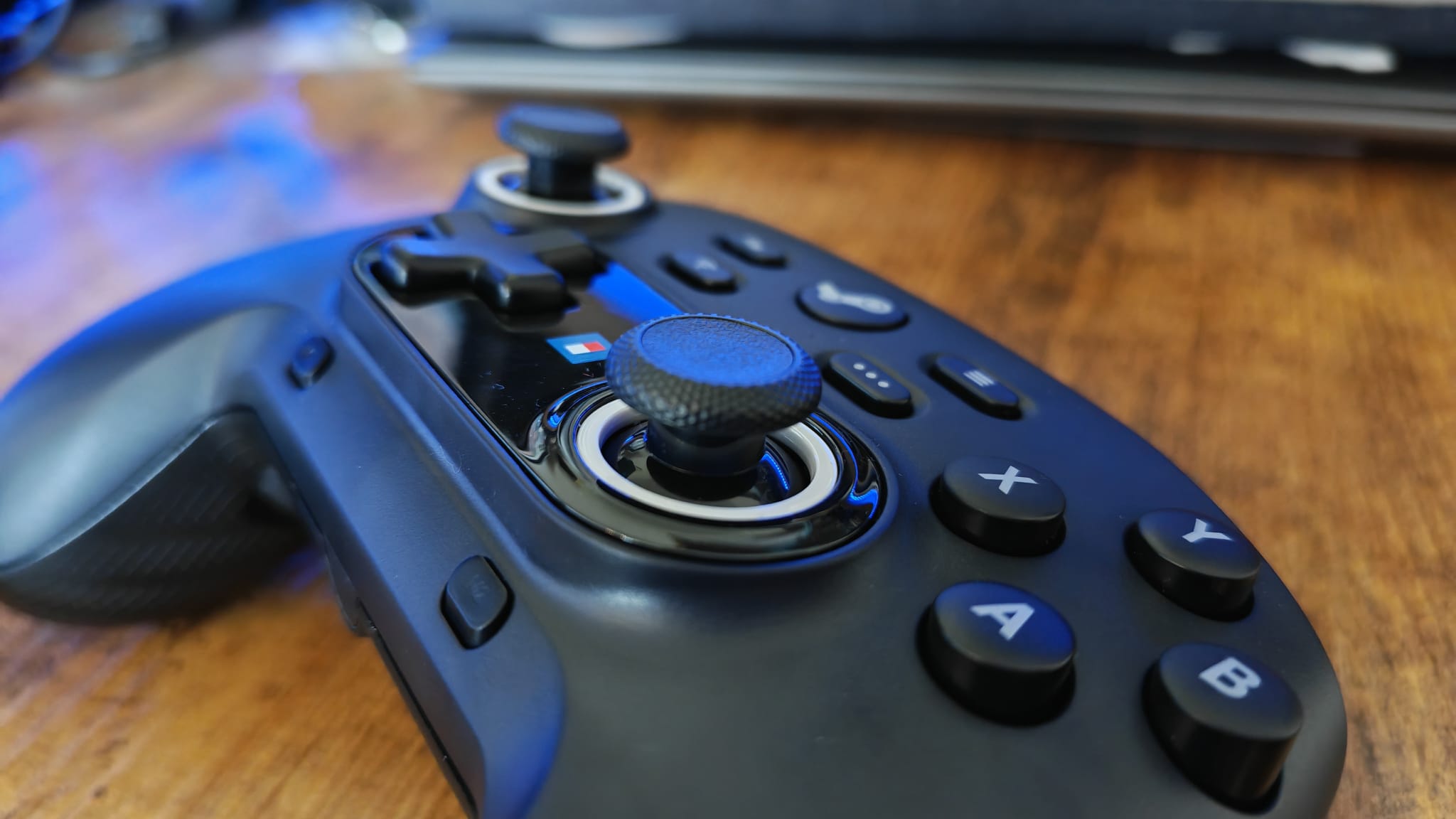
Speaking of that wireless connection, I wish I had better news to report. I found the Bluetooth connection to be extremely weak. When playing any game with the controller wirelessly, it had to have a clear, unblocked line of sight to my gaming PC. Even if I was sitting less than two meters away from the PC, if I rested the controller on my lap, or crossed my legs, or altered my position at all, I'd be hit with massive misreads of my inputs. I also found there to be increased latency when using the Bluetooth connection, with a fair few parries in Clair Obscur not registering as a result. Maybe this was my fault for not tilting the top of the controller toward the PC - yes, that's a real thing I had to do to keep things stable at times.
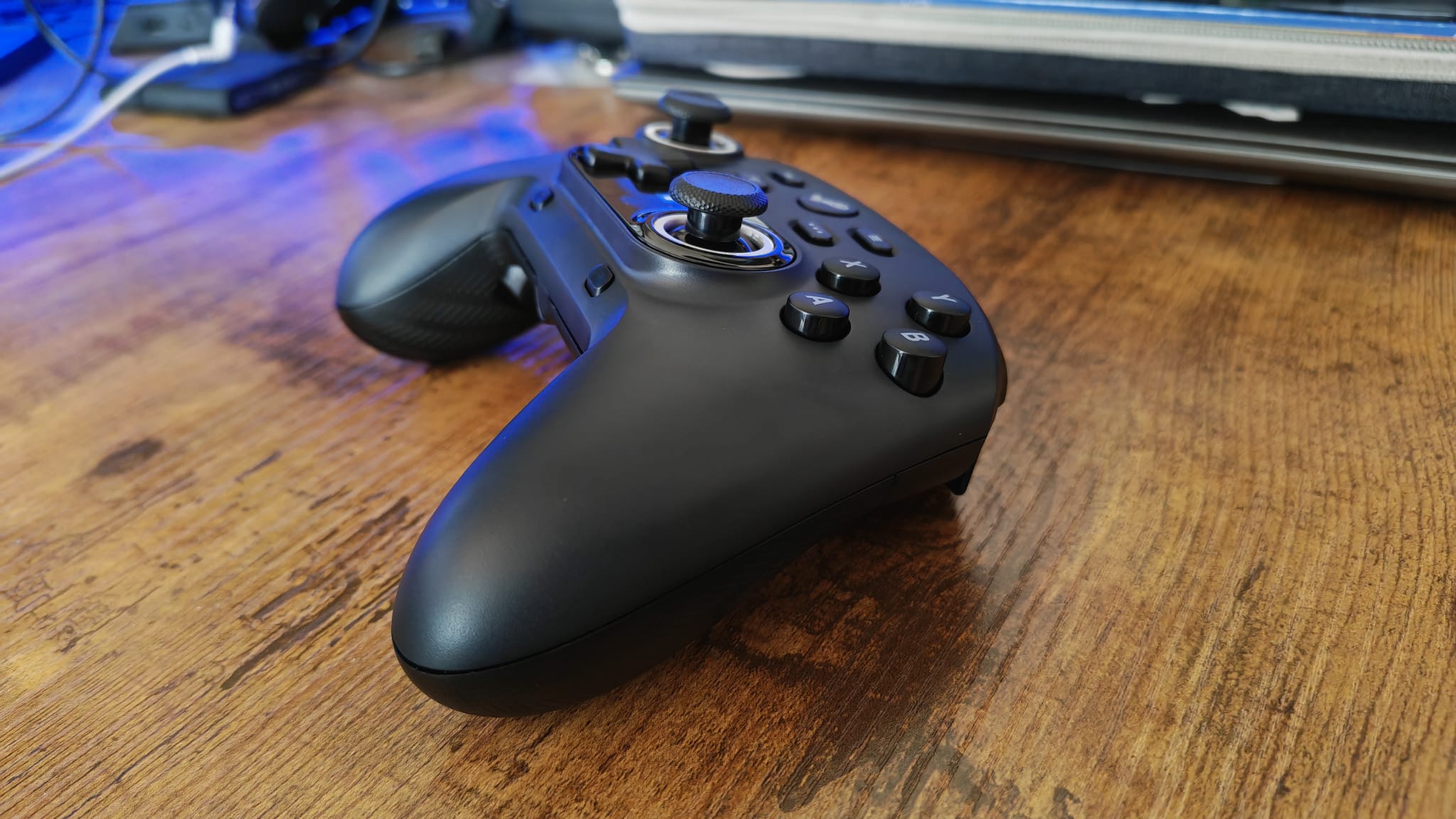
This is another really big disappointment, and something that only adds to the feeling that this controller has been made with pretty cheap elements. The slow, clunky feeling of the face buttons does have an almost nostalgic quality to it, which suits 2D platformers well, but when I was being overwhelmed by enemies in Towerfall Ascension's co-op levels, I felt like I was being held back by the HORIPAD's lack of speed. It was almost at the point where my thumbs were fatiguing because each button press felt so laboured, which isn't actually normal for a controller at the budget end of the scale.
The major saving grace while playing games like Clair Obscur, Death Stranding, and Dragon Ball: Sparking Zero is that the HORIPAD is so comfortable in the hands. The two back buttons squeeze in delightfully, and that more angular design really helps to make them feel distinct in the market.
Should you buy the Wireless HORIPAD for Steam?
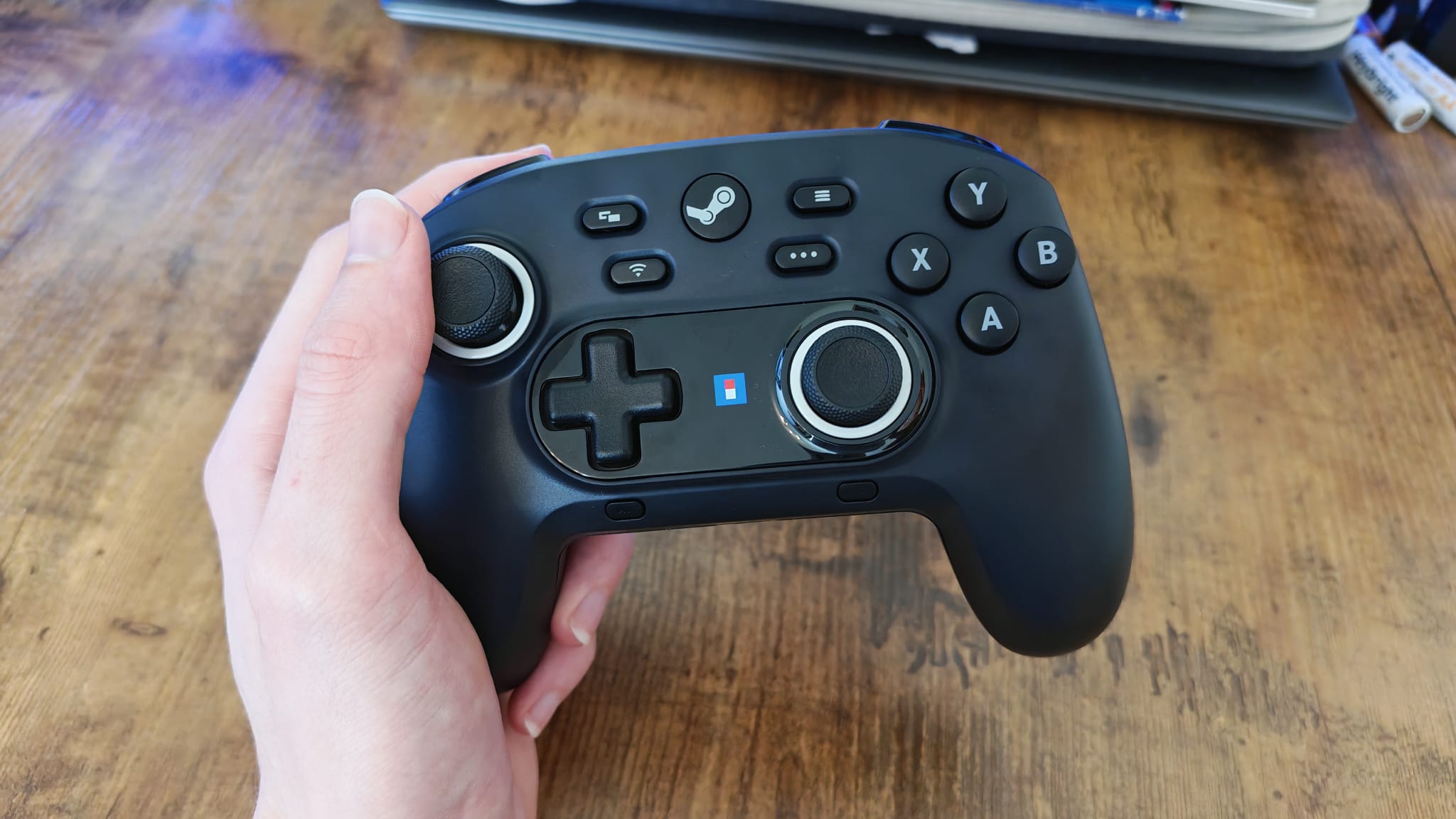
It's hard not to be disappointed by the Wireless HORIPAD for Steam. Despite its official licensing from Valve's platform, there's an overriding feeling of cheapness to this controller that I can't really advocate for. I've tested plenty of great PC controllers this year, like the Manba One, the GameSir Tarantula Pro, and even the PB Tails Crush Defender, which have all captured a distinct feel under $100, and they all work as intended. With fairly widespread reports from users that gyro motion controls have big problems here, and with a design that really doesn't live up to modern controller competition, the HORIPAD is a tough one to recommend.
And yet, the massive comfort here might be exactly what some Steam gamers are looking for in the occasional game they need a controller for. Steam input is a big win depending on the games you play, and the back buttons will turn anyone who prefers a basic controller into a believer. In some ways, the HORIPAD's foibles actually feel more authentic to the weirdness of the original Steam controller from 2015, so to each their own.
For me, this isn't one I'd recommend right away, partly because there are so many controllers now sitting at this price point that do things better overall.
How I tested the Wireless HORIPAD for Steam
I used the HORIPAD for Steam for about a week before this review was written. I tested it by using it for all of my PC gameplay within that timeframe, and used it in the usual gauntlet of GamesRadar+ controller testing games. This includes Clair Obscur: Expedition 33, Towerfall Ascension, Celeste, Hunt: Showdown 1896, Dragon Ball: Sparking Zero, and Cyberpunk 2077.
I dabbled in all of the various Steam settings available for this controller and compared it closely with other gamepads of this price point. For more on how we test the latest controllers, check out the GamesRadar+ Hardware Policy.
Need a controller for a different platform? Check out the best Nintendo Switch controllers, the best PS5 controllers, and the best Xbox Series X controllers.







